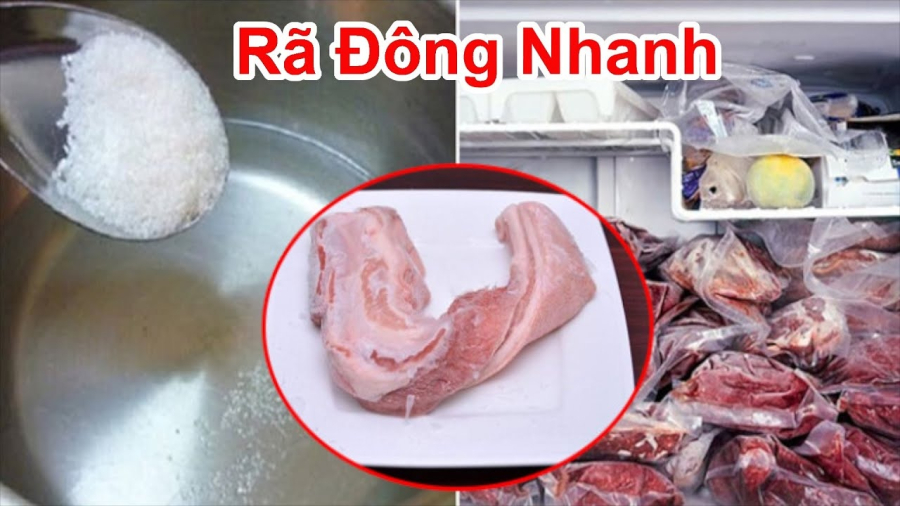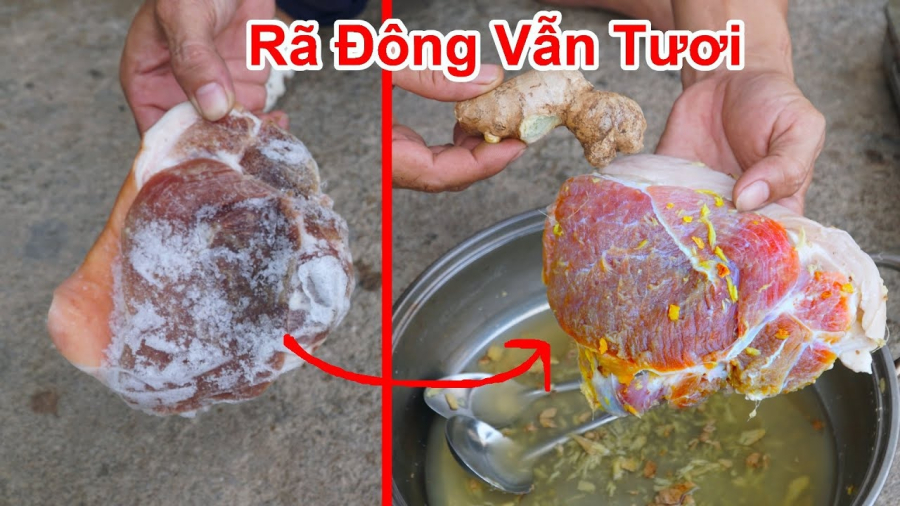Defrosting meat is an essential step to ensure food safety and delicious results. However, if not done properly, it can lead to bacterial growth and a decrease in food quality. Here are some tips for effectively and safely defrosting meat:

With these simple tips, you’ll save time in the kitchen.
1. Defrosting in the Fridge
-
Safest and best for preservation: This method is recommended by health and food safety organizations. Place the meat in the fridge and let it defrost slowly over an extended period, maintaining a safe temperature below 5°C (40°F).
-
Defrost time: The time needed depends on the size and type of meat. Smaller cuts like chicken or pork might take around 8-12 hours to fully defrost, while larger ones like beef could take a couple of days.
-
Sealed packaging: Keep the meat in airtight plastic bags or containers to prevent air exposure and maintain moisture, avoiding direct contact with other foods in the fridge.
2. Cold Water Defrosting
-
Quick and efficient: For faster defrosting than the fridge method, submerge sealed meat in cold water. It typically defrosts within 1-2 hours, but change the water frequently to prevent bacterial growth.
-
Frequent water changes: Ensure the water stays cold and fresh by changing it regularly. Never use warm water, as this increases the risk of bacterial growth.

Using hot water to defrost meat is ineffective and unsafe.
3. Microwave Defrosting
-
For short-term defrosting only: Microwaves can quickly defrost meat, but it’s crucial to cook the meat immediately afterward.
-
Use the defrost setting: Opt for a low power setting or a dedicated defrost setting if available. Keep a close eye on the meat to prevent any accidental cooking during defrosting.
Important Notes:
-
Never defrost meat at room temperature, as it creates an ideal environment for bacterial growth.
-
Use defrosted meat promptly and avoid prolonged exposure to prevent bacterial growth.
-
Cook meat thoroughly after defrosting to ensure any remaining bacteria are eliminated.
By following these tips, you can safely defrost meat while maintaining its quality. Adhering to these guidelines will ensure the health and taste of your meals.
Methods for Thawing Meat Quickly Without Compromising Taste
 Meat Quickly Without Compromising Taste’>
Meat Quickly Without Compromising Taste’>Do you want your meat to be perfectly thawed without sacrificing the taste or nutritional value? This article has the answer to your dilemma – learn the best techniques to thaw your meat quickly and safely.



































